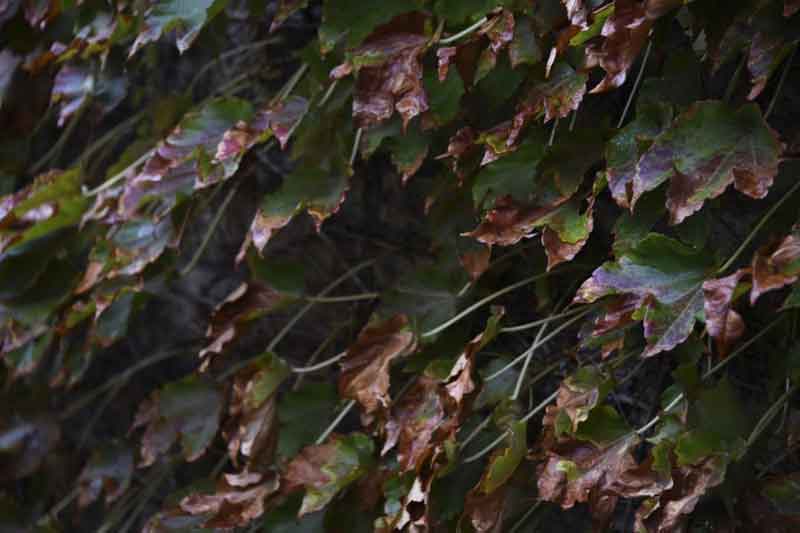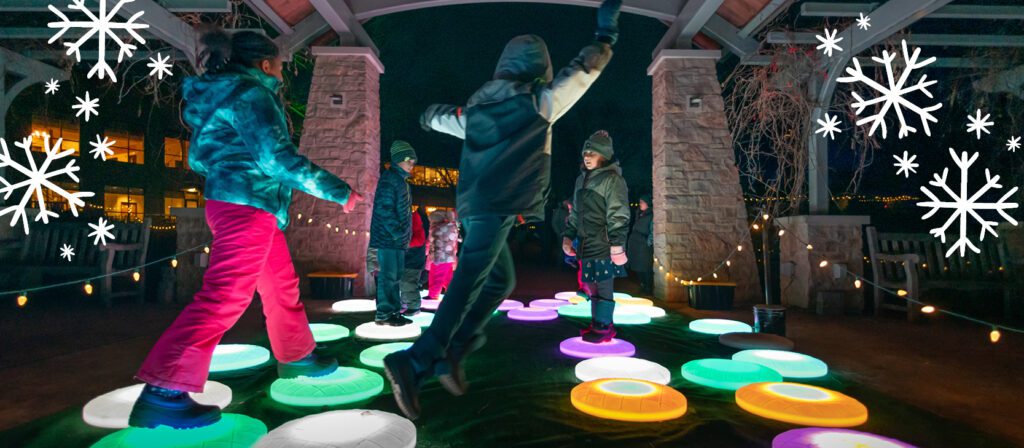If you’re reading from Wisconsin, you’ve very likely felt the chill in the air this autumn and seen the colors of tree leaves transform from a sea of green into a brilliant portrait of reds, golds and browns.
While the fall is a great time for us to get outdoors and enjoy the sights, sounds and smells of the season, it is often much harder on plants and animals that don’t have the ability to dash indoors for a mug of warm cocoa. Winter certainly is well on its way, and it’s only going to get colder from here. It’s time for us to talk about how plants handle the challenges of winter by adapting for it.
Plant Adaptations for Winter
Winter poses a significant challenge to living creatures, but there is a bit of background information to know to help us understand why. The fact is that most living creatures, plants and animals, have a great deal of water in them. That doesn’t mix well with the deep cold of Wisconsin winters, as water in cold temperature will freeze.
This presents a problem to living cells, which are soft and thin, compared with the sharp edges and spikes presented by ice crystals. Freezing of the cells can cause tissue death and when seen in plants takes the form of die-off with dark colors and crinkled leaves.

Frost and cold are familiar to most people, but many folks do not take time to think about how plants deal with the cold. This can be a different way of thinking for us, since we are able to move indoors to a nice warm area when winter hits, or can simply bundle up with extra layers of clothing. Plants don’t have that advantage; they’re exposed to the elements day in and day out. Fortunately, since we don’t have to replant the entire landscape each spring, we know that plants must have some useful adaptations for making it though the season.
Freezing Fluid in Cells
Trees, especially, have some amazing internal adaptations for dealing with cold temperatures. When winter begins to set in, hormones within the plant signal for certain changes to happen. To avoid the problem of the fluids within their cells freezing, some trees are able to move the fluids within their cells around. This allows the fluid to freeze safely in “extra-cellular” areas or spaces that are outside of the cells. This helps prevent damage to the tree, and is widely utilized by plants like evergreens.
Creating Anti-Freeze
Perhaps better than freezing safely is to stop freezing from happening altogether. How can trees accomplish that? By creating their own anti-freeze!
By concentrating the amount of sugars, salts and other compounds in their fluids, they lower the point at which these liquids will freeze, meaning it would have to be much colder to damage the plant. Being able to make your own anti-freeze is extremely helpful, and allows trees to survive in conditions and climates in which non-adapted plants would be ruined by frost and ice.
Going Dormant
A third internal change that takes place within plants is dormancy. This is when plants, thanks to the hormones signaling them to begin changing, reduce or nearly stop their growth. Going into dormancy helps plants conserve energy and resources during the colder seasons.
In going dormant, many plants lose their green parts on the surface and “retreat” below the ground. Plants like those with bulbs and other perennials can ride out the cold beneath the earth and snow where the temperature is often much warmer. When it gets warm enough, as spring comes, they can leave dormancy to resume growing again. Interestingly, some bulbs actually require a period of cold before they are able to start growing!

Dropping Leaves
Internal changes aren’t the only kind that plants make to deal with the cold. One of the best known external changes is a moniker for the season: Fall.
While leaves are great for catching sunlight during times of growth, they can be a dangerous source of water loss for plants during the winter. Water naturally exits trees and plants through leaves, and this process usually helps keep the flow of liquids moving upward through the plant.
By dropping their leaves, plants reduce their surface area that is exposed to the cold, drying air as well as save water in the plant itself. This is an important process since the nutrients that were in the leaves are broken down and returned back into the soil.
In contrast, trees like evergreens hang on to their leaves (or needles as we often know them). Why do they do this? Their leaves have very little surface area due to their shape and a thicker outer coating than trees that drop their leaves. The leaf size and shape allows for much less water loss, and it is one reason that these pines and firs are usually known for living in colder conditions.
Winter Damage
Ice, Snow and Cold
While some plants are well adapted to the cold, a bad season can cause damage to even the hardier trees, shrubs, and perennials. Plants are vulnerable to a range of different damage throughout the winter season. Simply freezing, for those plants that are not cold tolerant, usually means death for the plant. Often for non-woody plants, the green tissue will not resist frost and even some woody parts of plants can be vulnerable as well.
Besides the cold, snow and ice are commonplace in Wisconsin winters. While we often think about them in terms of temperature, both snow and ice are extremely heavy.
If you’ve ever carried jugs of water, you probably know this firsthand. All of that weight can easily accumulate on remaining leaves, stems and branches. Since trees can grow to be pretty large, that’s a lot of weight for the plant to carry, and when they can’t hold the weight, they break.
The same effect can be seen in older wooden barns and buildings around our state; snowstorms and icy conditions can cause their last legs to give out. Crashing branches can cause serious damage not just to the plant, but also to property and surrounding landscapes. These examples provide even more reasons why reducing the amount of area is a smart idea for plants to survive the winter.

Wind
Another type of damage that plants can sustain is from a much less visible threat: the wind. Even in dormancy, plants still require water to live and winds cause their water to be lost to the air. Because the winter is so cold, any available water that might have been around is likely to be frozen. Unless it warms up and thaws out, that water will be trapped in a form that the plant cannot use.
The landscape can quickly become a cold desert, even with snow and ice across the ground. The wind makes this worse by leeching what remaining water trees may be holding onto. If the plant isn’t able to take water up through its roots, it can lose more water than it needs and dry out. This is especially true during times with high winds, and the effect can hit evergreen trees and shrubs especially hard since they still have leaves from which water can be lost from, even if they’re adapted for the climate.
Sun & Heat
In a strange twist, sun and heat can end up damaging trees. This might be a bit baffling since we might expect that warmth would help them if they are struggling through the cold. Sunlight caught on bark can cause it to heat up, meaning that the plant will move more of its fluids to that section, believing it to be warm and reducing dormancy. When the sun goes down, or temperatures drop quickly, that area can freeze before the plant can go dormant again which can cause parts of the tree to freeze. When spring rolls around, these portions will die off and crack. This is often referred to as sunscald, and it can be deadly for a young tree trying to grow. The next time you take a walk in the spring, look for signs of this happening – usually on the sides of the tree that the sun would intensely shined on. You will notice a large split or caved in area along the largest part of the trunk.
Finally, the combined forces of hot and cold can work together to disrupt the lives of plants. Many in the Green Bay area are familiar with the bumps and cracks that show up in the roadways every spring. The ground heating up and cooling off throughout the day and night cycle causes expansion and contraction, which causes these splits and breaks. This is not only bad for asphalt but for roots as well. Plants can be overturned if their root system, which serves as an anchor for the plant, loses its hold. This is additionally dangerous for the plant because many root systems are adapted to survive in the warmer ground and not up above with wind and cold temperatures.
Stay tuned next week as we talk about how we can prevent these types of damage on our plants!
Sources





